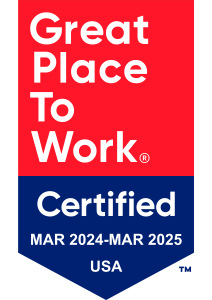As you prepare for retirement, one financial strategy gaining renewed attention is the Roth conversions—the process of moving money from a tax-deferred account like a Traditional IRA or 401(k) into a Roth IRA. While this decision involves paying taxes upfront, it offers the potential for tax-free growth and withdrawals in the future.
With changing tax laws, market fluctuations, and concerns over future tax increases, now may be an ideal time to explore whether a Roth conversion fits your retirement strategy.
At Goldstone Financial Group, we help clients weigh the short- and long-term implications of Roth conversions to minimize taxes and maximize retirement income.
Why Consider a Roth Conversion?
A Roth conversion involves moving money from a Traditional IRA or 401(k)—which grows tax-deferred and is taxed upon withdrawal—into a Roth IRA, where withdrawals can be tax-free in retirement.

The key motivation for many retirees or pre-retirees is tax control. With Traditional IRAs, the IRS eventually requires you to take Required Minimum Distributions (RMDs), which can push you into higher tax brackets.
A Roth IRA, by contrast:
Has no RMDs during the account holder’s lifetime
Offers tax-free withdrawals for qualified distributions
Helps reduce taxable income in retirement
Additional Benefits:
Tax diversification in retirement
Reduced exposure to future tax rate increases
Lower Medicare premium brackets (IRMAA)
Greater flexibility in estate planning
Good scenarios for a Roth conversions:
You expect higher taxes in the future.
If you believe federal tax rates will rise—or your personal income will increase—a Roth conversion allows you to pay taxes now at a lower rate.You’re in a low tax year (early retirement, gap years, etc.).
Before taking Social Security or RMDs, many retirees have a lower income window that can be ideal for conversions.You want to minimize RMDs.
Converting some or all of your Traditional IRA reduces the future balance, which lowers your required distributions and tax liability.You want to leave a tax-free inheritance.
Roth IRAs are powerful tools for legacy planning, passing on income tax-free assets to heirs.You’re under age 73 and want to act before RMDs begin.
You have more flexibility to shift funds strategically before RMDs are mandatory.
When You Should Be Cautious
Roth conversions aren’t always the right move. Here’s when it may not make sense:
You’re currently in a high tax bracket and expect to be in a lower bracket in retirement.
You need the funds within 5 years (Roth IRAs require a 5-year holding period for tax-free withdrawals).
You don’t have outside cash to cover the taxes owed on the conversion.
You’re close to thresholds that trigger Medicare IRMAA surcharges or make your Social Security benefits taxable.
At Goldstone Financial Group, we help clients project the tax implications year by year to avoid unpleasant surprises like unexpected tax bills or lost subsidies.
The Mechanics of a Roth Conversions
Here’s how a Roth conversion generally works:
Determine the amount you want to convert from your Traditional IRA or 401(k).
Calculate the tax liability—the amount converted is added to your taxable income for the year.
Initiate the transfer—your advisor or custodian moves the funds directly from the tax-deferred account to a Roth IRA.
Pay the tax bill—preferably using non-retirement assets, so your retirement savings stay intact.
You can convert all at once, but most experts recommend partial Roth conversions over several years to stay within lower tax brackets.
Current Tax Landscape: A Window of Opportunity?
Thanks to the 2017 Tax Cuts and Jobs Act (TCJA), marginal tax rates are currently lower than historical averages—but that’s set to expire in 2026, unless Congress acts.
That means Roth conversions before 2026 could offer a “discounted” tax opportunity. After that, if rates revert to higher levels, the cost of converting increases.
Also, the Secure Act 2.0 increased the RMD age to 73 (and eventually 75), providing more time for conversions during early retirement.
This makes 2025 and 2026 key planning years for strategic partial conversions.
Should You Convert Your Entire IRA?
Rarely. While a full conversion is possible, most people benefit from converting in portions, staying within a favorable tax bracket each year.
Question | Why It Matters |
|---|---|
What is my current and future tax bracket? | Helps determine if now is the right time to convert. |
Do I have cash on hand to pay the taxes? | Paying taxes from outside the IRA preserves its value. |
How long do I plan to leave the funds invested? | Roths are most beneficial over longer time horizons. |
How will this impact Medicare or Social Security? | Conversions can trigger cost increases if not timed well. |
Am I planning to leave assets to heirs? | Roths offer tax-free inheritance advantages. |
Conclusion
Converting to a Roth IRA can be one of the smartest moves you make for retirement—but only if done strategically. With today’s favorable tax environment and the potential for higher future rates, there may be a limited window to take advantage of this opportunity.
Every retiree’s situation is different. That’s why at Goldstone Financial Group, we help you see the big picture—so you can make informed decisions that protect your income, minimize taxes, and support your long-term goals.
Ready to see if a Roth conversion fits your retirement strategy? Schedule a consultation with Goldstone Financial Group today.



